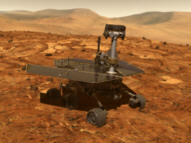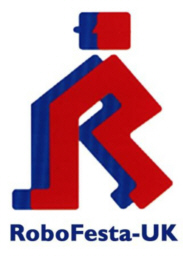| ROBOTIC SPACE MISSIONS |
| EDUCATIONAL PROGRAMS |
| RESOURCES |
| FORTHCOMING EVENTS |
| ORGANISING EVENTS |
| FUNDING BODIES |
| USEFUL CONTACTS |
| PAST MISSIONS |
| CURRENT MISSIONS |
| FUTURE MISSIONS |
| ESA EXOMARS MISSION |
| UK VANGUARD MISSION |
ROBOT SPACE EXPLORERS
ROBOTIC SPACE MISSIONS
Space robots come in all
shapes and sizes, and have a wide variety of functions. These include
planetary flyby probes (e.g. Voyagers 1 and 2), orbiters (e.g. Galileo,
Cassini), atmospheric probes (e.g. Huygens Titan probe), landers (e.g.
Mars Pathfinder), rovers (e.g. Sojourner), robot arms (e.g. the Space
Shuttle Remote Manipulator System), and robots currently under development
for the International Space Station.
Nowadays, the word “robot” is often applied to any device that
works automatically or by remote control, especially a machine (“automaton”)
that can be programmed to perform tasks normally done by people. Early
last century, “robot” usually meant a manlike mechanical device (“mechanical
man” or “android”) capable of performing human tasks or behaving in
a human manner. What all robots have in common is that they perform tasks
that are too dull, dirty, delicate or dangerous for people.
Space probes hurtling through the solar system may not seem
like robots, but they fully merit that name by performing programmed
tasks over long periods without direct human supervision. Operating
in the vacuum of space and withstanding exposure to radiation and extremes
of temperature, they explore places not yet accessible to humans.
 All
space robots are basically quite similar, in that each has a controller,
sensors, actuators, radio communications and a power supply. The sensors
provide information about the robot and its environment. The controller
processes the information from the sensors, along with instructions radioed
from ground control, and sends appropriate command signals to the actuators.
The actuators and drive convert the command signals into actions.
All
space robots are basically quite similar, in that each has a controller,
sensors, actuators, radio communications and a power supply. The sensors
provide information about the robot and its environment. The controller
processes the information from the sensors, along with instructions radioed
from ground control, and sends appropriate command signals to the actuators.
The actuators and drive convert the command signals into actions.The long transmission times for radio waves over interplanetary distances preclude “real-time” remote control of distant space robots from Earth, so such robots must be capable of operating independently (autonomous control). This is particularly important for rovers, which are likely to encounter rocks, cliffs, craters and other hazards as they move around.
Many mobile robot
(“mobot”) controllers use a layered system of control modules based
on insect behaviour. In the development of the software, layers of behaviour
generating modules are added one at a time, each of which connects sensing
to action. The modules all run in parallel whenever triggered by the
relevant sensors. To prevent conflicts arising between behaviours that
could be triggered at the same time, the modules are organised into a
“pecking order” (hierarchy). Higher-level behaviours have the power to
temporarily suppress lower-level ones, but when the higher-level behaviours
are no longer being triggered, the lower-level ones resume control.
